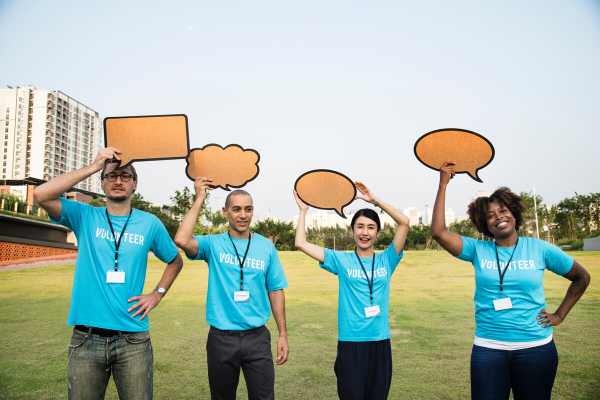Insights
INSIGHTS
All Topics
The best platforms for social media fundraising
03 Nov 2020by Chloe Green
Social media can be a great tool to help fundraisers reach the right audiences for their campaigns. We take a look at how some of the biggest platforms can help get your name out there
Whether you’re trying to raise funds for a specific campaign or on an ongoing basis, social media can be a great boost to your fundraising.
Considering that about 70% of the UK population is signed up to one or more social media platform, that’s a huge opportunity to maximise your fundraising potential.
However, with so many channels to choose from, it can be difficult to know which are the right ones for your particular organisation’s goals, messaging and audience – or what tactics will work for each platform.
The one thing that all these platforms have in common is that a ’set up and go’ approach won’t cut it – just like physical fundraising, social media fundraising requires constant tending to get results, replying to people who have interacted with your organisation and constantly adding fresh content.
Read on for a quick rundown of the major social media channels and their fundraising features for charities.
The main platforms – Facebook, Instagram and Twitter are covered here. Look out for part two which will cover Snapchat, YouTube, LinkedIn and TikTok.
Best for:
With an emphasis on maintaining relationships with friends, family and the wider community, around 44% of the UK population use Facebook daily, making it still the most populous single platform. But the rise of newer platforms means younger users in the 18-24 age group have been declining steadily over the past few years, as users aged 65+ have rocketed in 2020, making Facebook the preferred platform to reach the older donor.
Key fundraising features and tools:
Facebook recently launched Charitable Giving Tools in the UK, removing many of the barriers to charitable giving right inside the platform, bringing onboard features such as fundraisers, birthday fundraisers which users are encouraged to set up themselves, and a donate button which can be added to posts. As of 2018, there are no processing fees for donations.
There are lots of options and places for donation asks to be seen. Charities can promote their fundraising events through Facebook Event feature and include a donation ask. Or use the Groups feature to get conversations going and start a community around your cause.
You might also want to consider paid advertising on Facebook with a specific goal in mind. The advantage of this is that you’re able to cut through the crowded newsfeed and reach a specific target audience by demographic or interests, which has a much higher engagement rate.
What else to be aware of:
One drawback to be aware of with Facebook fundraising is the limited access to data. Charities receive the donor’s name and email address only if they decide to share it.
Also, be aware that, in order to access Facebook Charitable Giving, your organisation has to be approved. Therefore, you should factor in some potential waiting time.
Best for:
Instagram is based around using pictures (and now videos) to tell stories, so it’s very much a visual platform. If your charity has exciting visual content to share, whether it’s from staff and volunteers in the field, or beneficiaries and supporters, you should have a fundraising presence on Instagram.
The platform’s powerful analytics ability for extensive use of hashtags are key selling points for charity marketers.
Instagram has about 27 million users in the UK, with its demographic leaning heavily towards the 25-34 age range.
Instagram is primarily accessed via a mobile device, so keep that in mind when planning campaigns.
Key fundraising features and tools:
Because Instagram is owned by Facebook, you can access the same Charitable Giving Tools through Facebook. You can set up a ’business’ profile and add a donation button to your charity’s account.
Instagram also uses the same advertising tools as Facebook, with ways to set up, run and track campaigns and target demographics in the same way as Facebook ads.
Probably the best feature though is the donation stickers that you can add to the Stories feature of Instagram. The allow charities to use photos, videos and even polls/audience questions and other fun ways to tell an authentic, dynamic and interactive story of their cause.
What else to be aware of:
Instagram Stories only last 24 hours before being deleted, unless you pin one to your profile as a highlight.
Best for:
Twitter is a fast-moving platform that’s great for ’micro-blogging’, having real-time conversations and listening to what others are saying about issues important to your cause.
Tweeting is a simple and effective way to align your cause with what’s happening in the world now, piggybacking onto trends and sharing your expertise or opinions. 71% of Twitter users say they use the platform as a source of news, and users are far more likely to share their opinions than any other platform.
The platform is unparalleled for reaching influential people such as journalists, politicians and activists, and even celebrities who might endorse your cause.
There are around 15.25 million Twitter users in the UK, with the biggest group in the 25-34 age range.
Key fundraising features and tools:
Hashtags are arguably the most important feature of Twitter, allowing you to target your content towards people interested in specific topics, via keywords. You can even start your own campaign around an issue by starting your own hashtag.
You can have direct two-way conversations with supporters both publicly and through private messaging, and though there is no direct donate button, within your Tweet you can combine your ask with a text giving code or a link to your website or fundraising page.
Advertising on Twitter allows you to target posts to specific user groups and post ’promoted Tweets’. This can be very helpful in getting heard above the noise.
What else to be aware of:
At a maximum of 280 characters, Tweets are short and sweet. It’s a quick-fire platform that works best when you Tweet frequently with a variety of donations asks, infographics and other visual content throughout the day, and engage actively in discussions.
We’ll be bringing you Part Two of this rundown in the next few weeks, where we will be looking at the fundraising opportunities offered by Snapchat, YouTube, LinkedIn and TikTok.
Chloe Green
More on this topic
Related Content
Recommended Products
15 Jan 2025by Laura Stanley
How to revisit your charity’s story in 2025Sponsored Article
15 Jan 2025by kirsty marrins
AI and the future of service delivery
Our Events
Charity Digital Academy
Our courses aim, in just three hours, to enhance soft skills and hard skills, boost your knowledge of finance and artificial intelligence, and supercharge your digital capabilities. Check out some of the incredible options by clicking here.
























